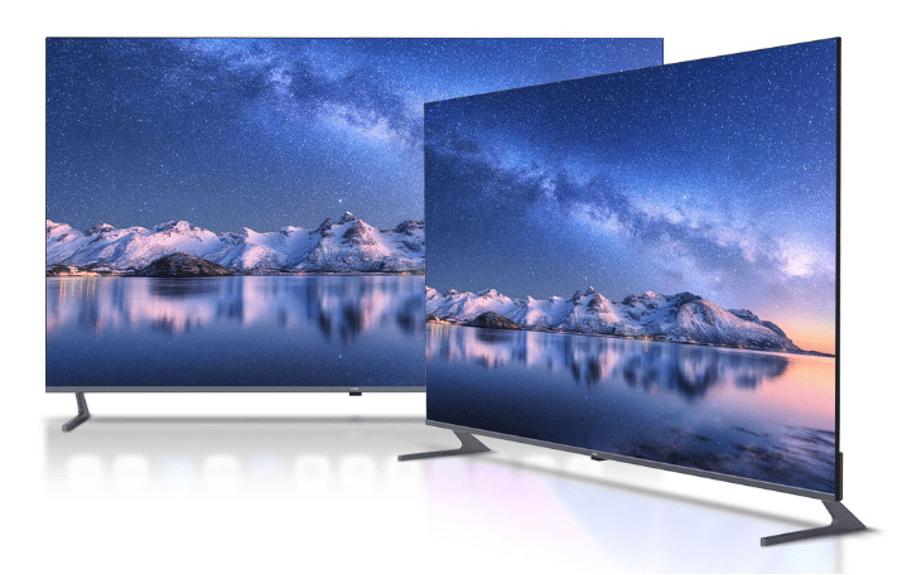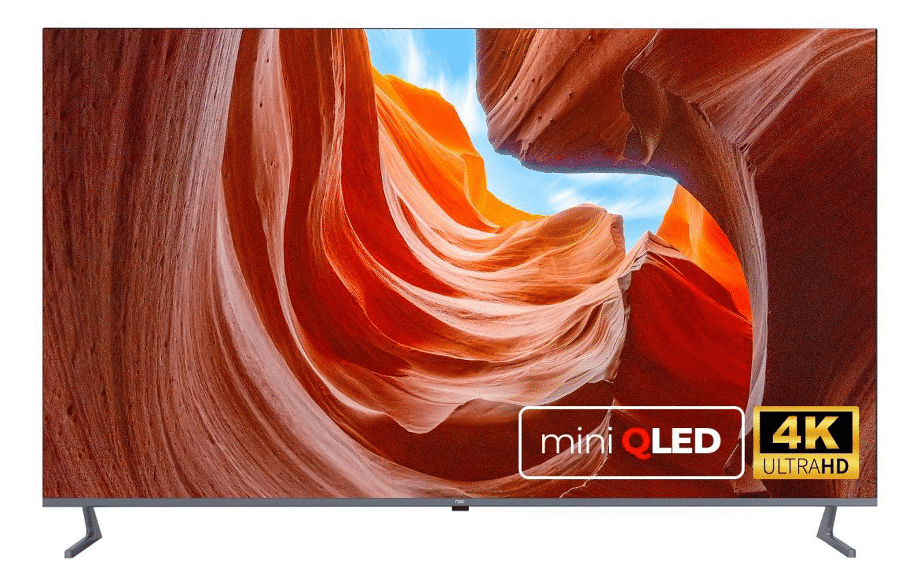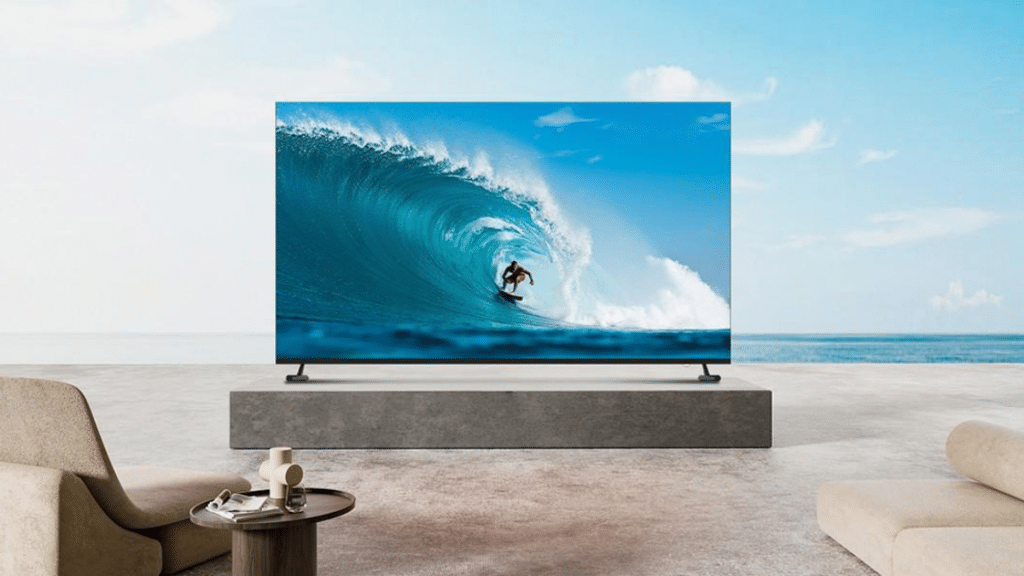Today, TV technologies are developing rapidly; new technologies are introduced relentlessly. With various TV technologies, customers are very likely to need clarification about which one to choose. To find a suitable TV, you need to understand the TV technologies first.
There are two leading technologies in the TV market: Mini LED and QLED. This article is your complete guide to choosing between Mini LED TVs and QLED TVs; continue reading!
Understanding Mini LED and QLED
How Mini LED works
Mini LED reduces the size of LED chips; typically, they are less than 0.2 mm in diameter. Through these small chips, Mini LED achieves more screen backlighting partitions, and these partitions can be controlled precisely. Therefore, Mini LEDs achieve higher brightness and more uniform backlighting.
How QLED works
QLED uses quantum dot technology, and that’s why there is a “Q” in its acronym. The light-emitting center of a QLED are quantum dots: they are semiconductor nanocrystals with dimensions between 1 nm and 100 nm. The quantum dots can emit red lights and green lights with a blue LED backlight; then they will mix up into white lights. Through this process, the lighting performance gets improved.
Picture Quality
Comparison of Color Accuracy and Contrast
Mini LED technology achieves greater color accuracy and saturation through increased backlight zoning and finer light control. As for contrast, Mini LED achieves a finer local dimming effect by adding backlight zoning, which greatly improves contrast. Because Mini LEDs allow for finer light control, blacks are very deep with little to no halo. As a result, Mini LED TVs are the best TVs for dark rooms.
QLED technology is suitable for TVs for bright rooms. Using the quantum dots technology, which emits red, green, and blue light, QLED TVs have a great color performance. However, the contrast performance of QLEDs is not as good as Mini LEDs. In blacks, QLED TVs do not perform as well as Mini LEDs, and may have a slight halo effect in very dark scenes.
Differences in Brightness and HDR Performance
By using smaller LED backlight chips, Mini LED TVs enable higher brightness. Some high-end Mini LED TVs can reach a peak brightness of 4,000 nits, while QLEDs reach only 2,000 nits.
When it comes to HDR performance, Mini LEDs are more extreme in HDR content, providing finer contrast between dark and light and rich detail. On the other hand, QLED TVs excel in HDR content with enhanced color and brightness from quantum dot technology.
Viewing Angles and Motion Handling
Mini LED’s viewing angles are mainly decided by display panels and the manufacturer’s own technology, so not every Mini LED TV will offer the same performance. Though their viewing angles are not the best, they are better than many other TV technologies. Modern QLEDs usually have a limited viewing angle of around 55 degrees[1], meaning that they will suffer from color shifts and loss of contrast when viewed off-center.
QLED displays often demonstrate quicker reaction speeds in comparison to Mini LED, thereby minimizing the occurrence of motion blur during fast-moving visuals. Nevertheless, Mini LED televisions, introduced with exceptional local dimming abilities, can deliver a more seamless motion portrayal and diminish light blooming, particularly in high-contrast sequences.

Durability and Lifespan
Lifespan of Mini LED vs. QLED
Mini LED displays are generally quite durable, because the small LED chips are less likely to individual failure. Mini LEDs often include better heat dissipation mechanisms, which can enhance overall durability. The lifespan of Mini LEDs achieves more than 50,000 hours of usage.[2] Mini-LED displays achieve more than 50,000 hours of operation.
For QLED TVs, the quantum dots technology also leads QLED displays to an overall durability. The lifespan of QLEDs is comparable to that of Mini-LED displays.
Maintenance and Care Tips for Both Types
Keep it ventilated: It is important to make your TV well-ventilated to avoid overheating, or the lifespan of your TV may be reduced.
Keep a moderate temperature: You should place your TV in a room with a stable temperature and avoid extreme high or low temperatures. Avoid placing the TV near windows to prevent direct sunlight.
Update the firmware regularly: Regularly check and install firmware updates for your TV. These updates often include bug fixes, performance improvements, and new features that can optimize your TV’s functionality and extend its life.
Price and Value
Cost Comparison Between Mini LED and QLED TVs
Mini LED technology is more complex than QLED technology, requiring more backlight partitions and sophisticated light control technology. Therefore, Mini LED always appears in the high-end market, providing superior picture quality and viewing experience. In contrast, QLED TVs appear both in the mid-range and high-end markets to meet various needs of consumers.
Power Consumption of Mini LED vs. QLED
Since Mini LED backlighting systems need to drive a large number of lamp chips, these beads generate more heat during operation and therefore require higher power consumption to maintain their brightness and performance. QLED TVs, on the other hand, have relatively low power consumption, and quantum dot technology improves the efficiency of the backlight system.
Comparison Conclusion Table
| Picture Quality | Durability and Lifespan | Price and Value | |
| Mini LED | Greater color accuracy and saturation Blacks are very deep with little to no halo Higher brightness Finer contrast between dark and light and rich detail | Long lifespan | High-end market Higher power consumption |
| QLED | Excel in HDR content with enhanced color and brightness | Long lifespan | Both the mid-range and high-end markets Lower power consumption |

NPC’s Mini QLED TVs
After learning about the differences between Mini LED and QLED, you may still find it difficult to make a choice, but there are three products from NPC that perfectly combine Mini LED and QLED! Let’s dig deeper!
1. NPC miniLED 55M12-A and NPC miniLED 65M12-A:
These two products have many features in common.
To begin with, these two TVs are equipped with a 97.5% screen-to-body ratio and a full-screen design. They both have 4K ultra high definition and 3840*2160 high resolution. Their peak brightness can reach above 800 cd/m2. All these features add up to an excellent image experience. Besides, they both have a viewing angle of 178 degrees, which means you can view the screen from almost any position without significant loss of image quality.
What’s more, they provide awesome sound with 2 x 10W speakers and a high-power stereo. While experiencing a visual feast, you can enjoy an excellent listening experience as well. They also have powerful performances for smooth movie watching and gaming; the huge 1.50B+80B storage provides plenty of space to download apps. Their differences lie in the screen sizes. The NPC miniLED 55M12-A is 55 inches, while the NPC miniLED 65M12-A is 65 inches.
2. NPC miniLED 65M12-B :
This one is brighter than the A series. Its average brightness is above 600 cd/m2, and the peak brightness reaches above 1000 cd/m2, giving you an excellent image and video experience.
The ultra-narrow bezel design offers an impressive screen-to-body ratio that surpasses standard TVs, creating an almost seamless viewing experience where the image appears to have no boundaries. Featuring a stunning 4K Ultra HD display with a resolution of 3840 x 2160, this TV brings every detail to life with exceptional clarity. For gamers, it’s a game-changer—doubling the refresh rate from 60Hz to 120Hz with an HDMI input, delivering smooth, fast-paced action for an immersive gaming experience.
Conclusion
Although Mini LED and QLED vary in different aspects, both of them are leading technologies and have their advantages.
NPC’s TVs are a perfect combination of these two leading technologies, so if you are considering choosing a TV from Mini LED and QLED, choose NPC! NPC’s TVs will not disappoint you with their wonderful video and audio performance!
Get in touch with them today to get an excellent new TV!
References
- OLED vs QD-OLED vs QLED vs AMOLED vs Mini LED: Which is the best display? Available at : https://www.windowscentral.com/oled-vs-qled-amoled-vs-mini-ed-which-is-best-display (Accessed: 17th, July)
- A Brief Introduction to Mini-LEDs and Mini-LED Displays. Available at: https://www.americanbrightled.com/a-brief-introduction-to-mini-leds-and-mini-led-displays/ (Accessed: 17th, July)
